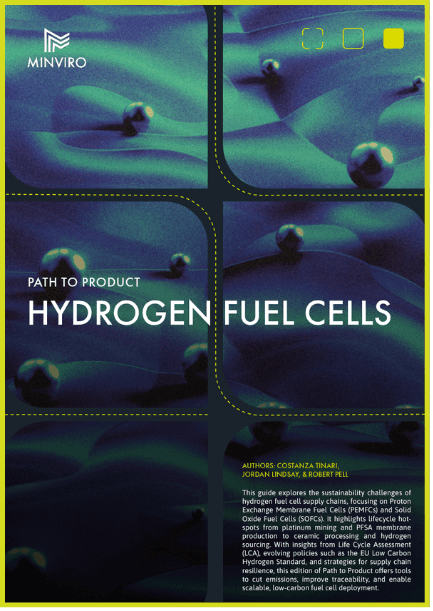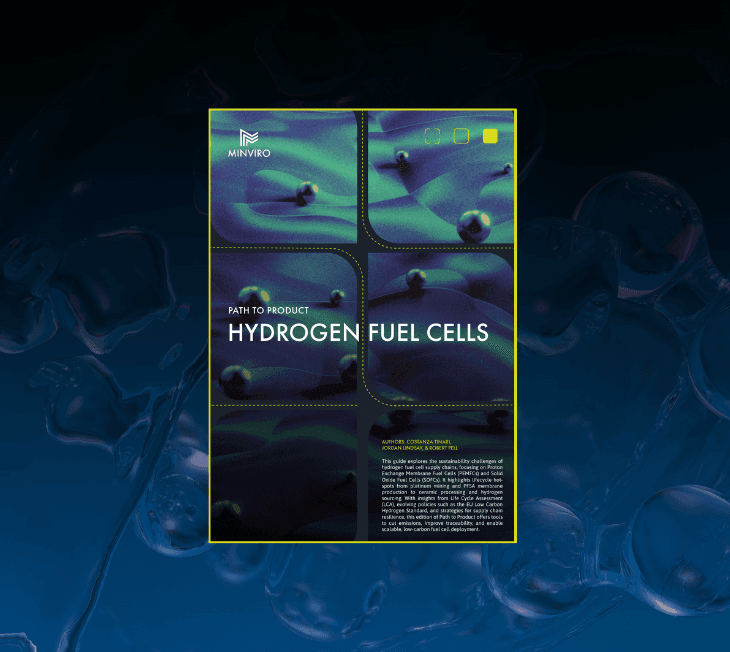- solutions
- industries
- about us
- resources
Client Resources
Path to Product: Sustainable Hydrogen Fuel Cell Supply Chains
By Costanza Tinari
Explore the sustainability challenges and opportunities in hydrogen fuel cell supply chains. This Path to Product edition examines life cycle hotspots, regulatory trends, and strategies for building resilient, low-carbon Proton Exchange Membrane (PEMFC) and Solid Oxide Fuel Cell (SOFC) systems. Learn how to cut emissions, improve traceability, and prepare for evolving compliance standards.
Download
The outline
Sustainable Hydrogen Fuel Cell Supply Chains: Risks, Opportunities & Solutions
A practical guide to understanding and improving the environmental performance of hydrogen fuel cell supply chains, with actionable insights from Minviro’s XYCLE LCA platform.
Covering materials, manufacturing, hydrogen sourcing, and compliance, this resource supports OEMs, policymakers, and sustainability professionals in meeting climate targets.
What makes hydrogen fuel cells important for the energy transition?
Hydrogen fuel cells convert hydrogen into electricity with only water and heat as by-products, enabling zero-tailpipe emission mobility and stationary power applications. However, climate benefits depend heavily on how hydrogen is produced and sourced.
What are the biggest environmental hotspots in fuel cell manufacturing?
Key drivers include platinum processing emissions, PFSA membrane production, and high-temperature ceramic processing. Addressing these hotspots is critical for lowering life cycle greenhouse gas (GHG) emissions.
Why does hydrogen sourcing matter so much?
Grey hydrogen has an embodied impact of over 90 g CO₂-eq/MJ, while renewable-powered electrolysis can cut this to under 20 g CO₂-eq/MJ. The production method is often the single largest contributor to a fuel cell’s carbon footprint.
What supply chain risks should companies prepare for?
Concentrated sourcing of platinum, rare earth elements, and ceramic materials in a few high-risk countries creates vulnerability. Regional production silos can also increase delays, emissions, and costs.
How are regulations shaping the future of hydrogen fuel cells?
EU and UK frameworks now demand lifecycle GHG tracking, traceability, and compliance with strict emissions thresholds. New measures like CBAM and the Critical Raw Materials Act will further affect sourcing and recyclability.
How can Minviro’s XYCLE platform help?
XYCLE delivers granular, region-specific life cycle assessments, identifying high-impact areas and enabling actionable strategies to meet environmental and compliance goals.
download
Get access today
Fill in the form below
Download
